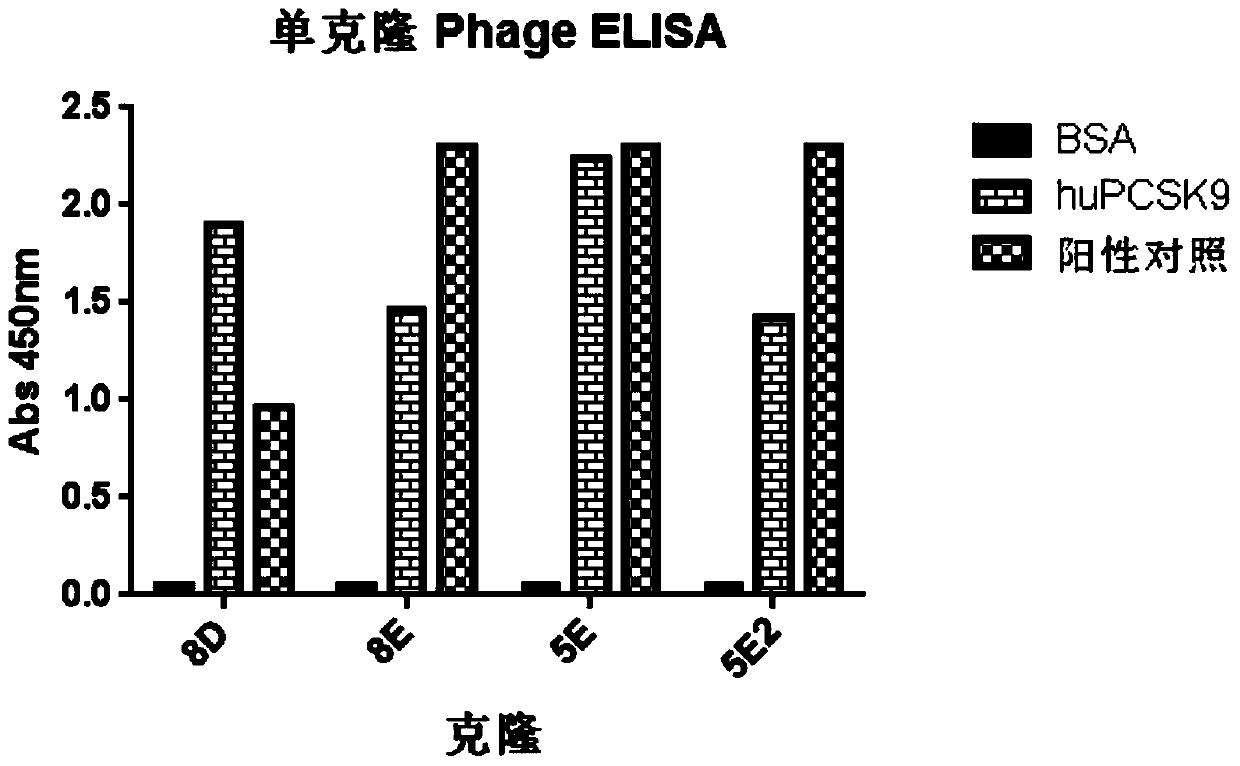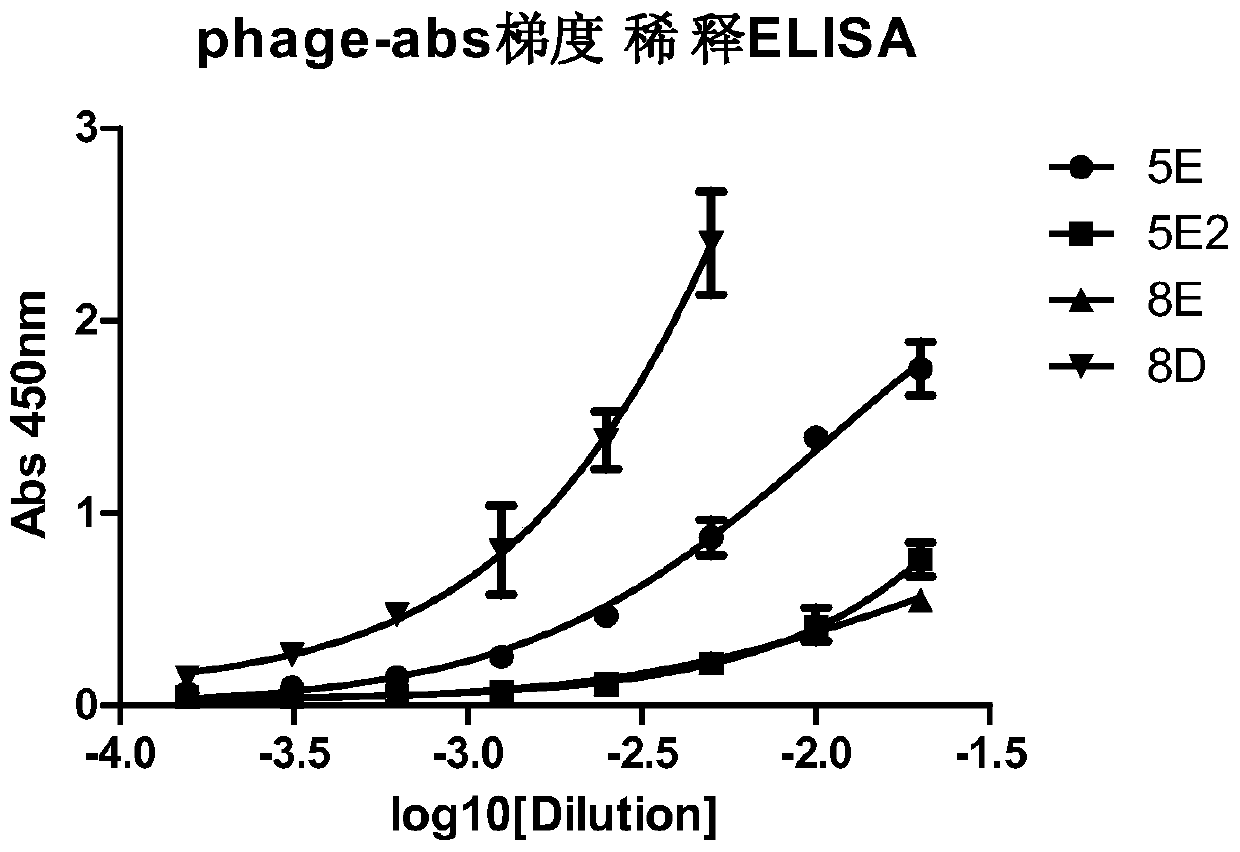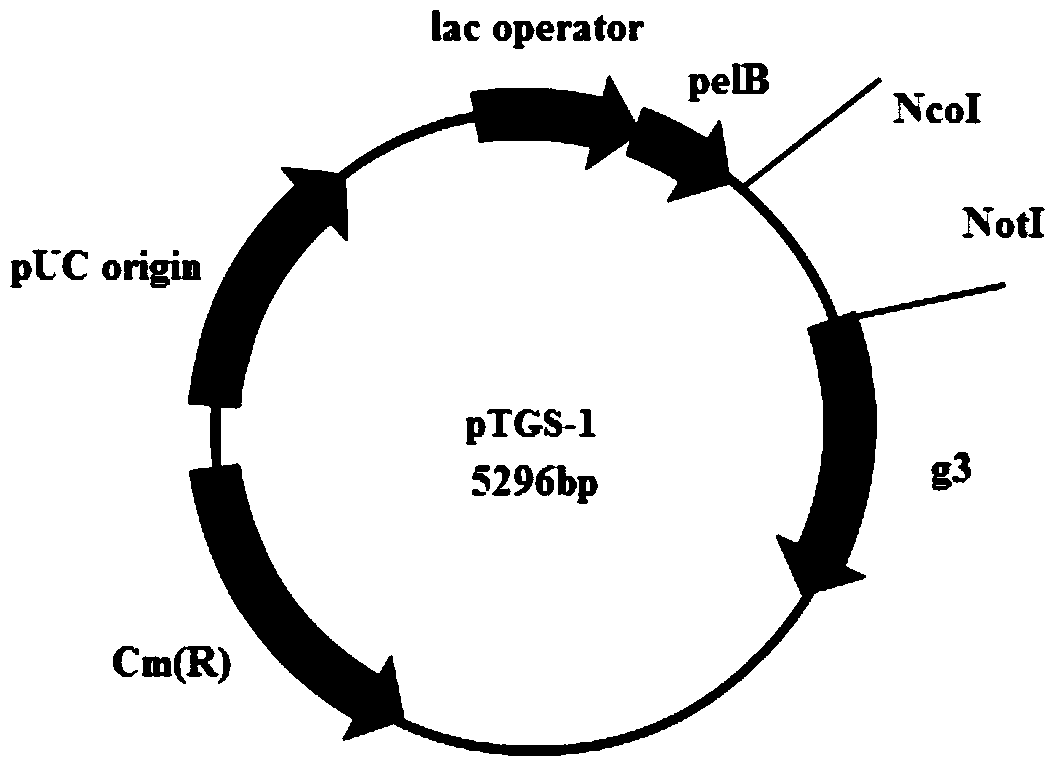Anti-human PCSK9 monoclonal antibody
A technology of antibodies and antigens, applied in the fields of antibodies, anti-enzyme immunoglobulins, metabolic diseases, etc., can solve the problem of lack of anti-human PCSK9 fully human antibodies
- Summary
- Abstract
- Description
- Claims
- Application Information
AI Technical Summary
Problems solved by technology
Method used
Image
Examples
Embodiment 1
[0154] Example 1: Biopanning of anti-huPCSK9 single chain antibody
[0155] The immunotube was coated with huPCSK9-his (NP_777596.2) as the antigen, the antigen coating amount was 5 μg / tube, and the coating was performed overnight at 4°C. The immunotube and the naive phage antibody library (prepared by the laboratory) were respectively blocked with 4% skim milk powder / PBST, and blocked for 1 hour at 37°C. The blocked phage antibody library was added to the immune tube for antibody antigen binding, and the amount of phage input was about 10 12 , 37°C for 1h. Unbound phages were washed away with PBS (T), antibodies were eluted with 0.1M HCL-Glycine, and eluted phages were neutralized with 1.5M Tris-HCL (pH8.8).
[0156] Take 550 μl of the neutralized phage to infect about 10 mL of the TG1 bacterial solution that has grown to the logarithmic growth phase, and let it stand at 37°C for 30 minutes. Add 9 mL of 2YT medium containing ampicillin. Take out an appropriate amount of...
Embodiment 2
[0157] Example 2: Screening of anti-huPCSK9 single-chain antibody positive clones
[0158] Well-separated monoclonal colonies produced after three rounds of selection were picked, inoculated into 1 mL of 2YTAG (Ampicilline: 100 μg / ml, Glucose: 2%) medium, and cultured overnight at 37° C. and 220 rpm. The next day, transfer to a new 96-well deep-well plate, culture to its logarithmic growth phase, and add about 10 10 Helper phage VCSM13. After static infection at 37°C for 30 minutes, centrifuge at 4000 rpm at 4°C for 15 minutes, discard the supernatant, resuspend the pellet with 2YTAK (Ampicilline: 100 μg / ml, kanamycin: 70 μg / ml), culture at 28°C, 220 rpm overnight. Aspirate the amplified phage supernatant for ELISA identification (see figure 1 ). The obtained positive clones were sequenced, and a total of 4 different antibody sequences were obtained.
Embodiment 3
[0159] Example 3: Phage ELISA determination of the affinity of anti-huPCSK9 single chain antibody
[0160] The clones obtained in Example 2 were subjected to display and purification of monoclonal phage, and a phage gradient dilution ELISA experiment was performed to identify the affinity of phage-abs.
[0161] huPCSK9 was coated with pH 7.4 phosphate buffer, overnight at 4°C. Wash three times with PBST, block with 4% milk-PBST at 37°C for 1h. The purified monoclonal phage was diluted proportionally in 4% skimmed milk powder, 100 μl of the diluted sample was added to each well, and stood at RT for 1 h. The ELISA plate was washed with PBST, and the HRP-anti-M13 monoclonal antibody diluted with 4% skim milk powder was added to the ELISA plate, and left at room temperature for 1 hour. TMB color development kit was used for color development at room temperature for 5 minutes. with 10%H 2 SO 4 Stop color development, 50 μl / well. The optical density value was measured with...
PUM
 Login to View More
Login to View More Abstract
Description
Claims
Application Information
 Login to View More
Login to View More - R&D
- Intellectual Property
- Life Sciences
- Materials
- Tech Scout
- Unparalleled Data Quality
- Higher Quality Content
- 60% Fewer Hallucinations
Browse by: Latest US Patents, China's latest patents, Technical Efficacy Thesaurus, Application Domain, Technology Topic, Popular Technical Reports.
© 2025 PatSnap. All rights reserved.Legal|Privacy policy|Modern Slavery Act Transparency Statement|Sitemap|About US| Contact US: help@patsnap.com



